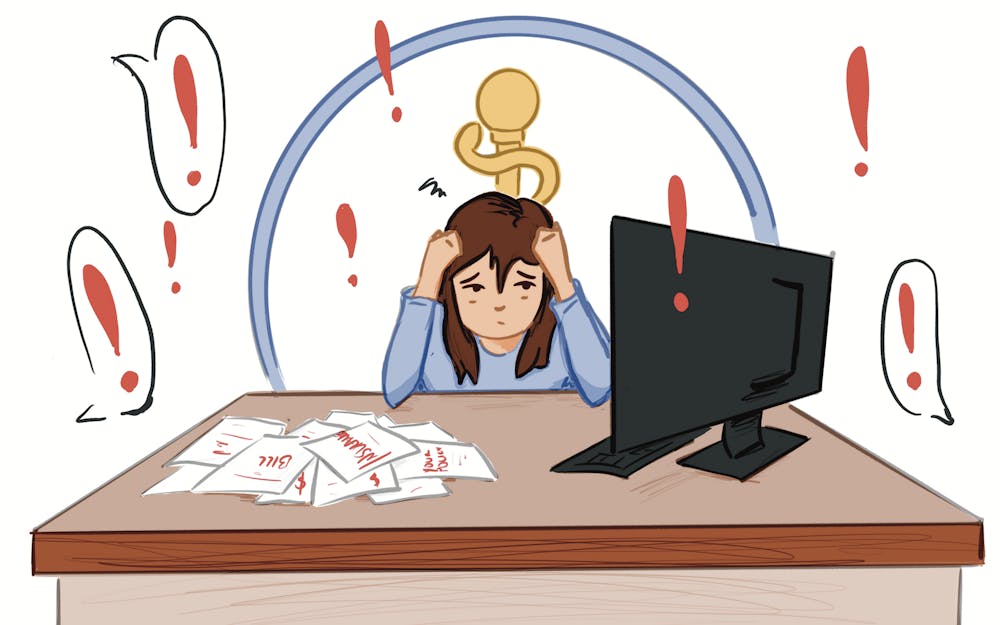Two days into my freshman year at Indiana University, my grandmother was run over by a car.
“I’m okay,” she’d said, her voice sounding exhausted over the phone. “Don’t freak out.”
I freaked out. Words spilled out of my mouth — “Are you sure you’re okay? Really? Did you go to the hospital? Why not? Then how could you know? Please go to the hospital, please?”
No matter how hard or which way I pleaded, she refused. “I can’t afford the bill.”
She wasn’t alone. Polling conducted over a 12-month period by non-profit public health information organization KFF found that one in four adults neglected to seek healthcare they needed due to cost. When looking at uninsured adults, the number rises to six in ten.
The money worries continue in a range of ways — 48% of insured adults reported concerns about affording their insurance premium. 41% of adults reported having medical debt. 73% reported worrying about the cost of healthcare services. About half of adults said they would be unable to pay an unexpected medical bill of $500 in whole without going into debt.
One factor in the high cost of healthcare in the U.S. is administrative spending, referring to costs like claims management, clinical documentation, credentialing and more. A study published in 2020 found concerning numbers: in 2017, U.S. administrative costs totaled $812 billion, or 34.2% of healthcare expenditures and $2,497 per capita. Canada spent 17% and $551 per capita.
The gap between the administrative costs of the two countries represents what a 2022 study calls administrative waste, referring to spending that does not contribute to health outcomes in any observable way. Based on the 2017 numbers, that’s $600 billion, or 73.9% of administrative spending and roughly a quarter of all health care expenditures. Put clearly: that $600 billion spent did nothing to improve the system. In fact, it made it worse.
Two weeks after my grandmother’s initial accident, I traveled home to visit. My grandmother’s affected leg had gone from an all-over bruised purple to normal — mostly. During a routine visit that weekend, her doctor inquired as to why her knee was so swollen. My grandma recounted the tale, and the doctor immediately ordered an ultrasound to check for blood clots. The swelling should’ve seen relief by then, he said. We rushed to the hospital anxiously.
We checked in on a tablet, sat in a vast but empty reception room, and waited to be called. At the 20-minute mark, my grandmother reached monumental levels of stress and began crying, so I approached the desk for help. They’d been unable to reach her insurance and were trying to resolve the issue.
A larger issue: they didn’t have the right insurance. We gave them the right details; they checked us in and sent us to another vast but empty ultrasound-specific reception room. We checked in again with the ultrasound-specific receptionist. And waited 30 minutes. You might notice a pattern here — my grandmother began to cry, and so I approached the desk. The nurses had never picked up the phone the first time. He called again, and one came, corralling us to an ultrasound room. “I was wondering where you were!” the doctor said as we entered. “I’d been waiting!” And so had we: an hour, roughly.
Oftentimes, these long wait times are caused by the administrative burden placed on healthcare workers — piles and piles of required filings they must complete to comply with the system, like prior authorization, approval usually required before a patient can receive a service, to billing paperwork, which can vary based on the diagnosis and insurance provider. These are consequences of a multi-payer healthcare system with no standard rate setting for care. Due to the lack of centralized guidelines and prices, caring for patients requires significantly more paperwork, service fees, and time spent to comply with the requirements of different providers.
With Electronic Health Record documentation, an attempt was made to streamline service for patients. EHRs are the digital version of a patient’s medical history, recording every nuance of their care to the point of redundancy, like one nurse who’d been documenting umbilical cord care for her teenaged patients for 10 years (teenagers don’t have umbilical cords). A 2016 study found that physicians spent only 27% of their time face-to-face with patients, but 49.2% completing EHR and desk work. Another 2022 study reported that physicians used a mean of 1.84 hours outside of office hours completing documentation. Despite its intention, the burden of this thorough documentation has been linked to increases in medical errors, threats to patient safety, inferior record quality and burnout.
Recent years have seen healthcare worker burnout increase, from 32% in 2018 to 46% in 2022. In a 2023 survey of physicians, 61% reported that the factor contributing most to their burnout was “too many bureaucratic tasks” — like prior authorization, billing, and EHR. The percentage of health workers who intended to seek out a new job went up from 33% in 2018 to 44% in 2022.
No blood clots were found in my grandmother’s knee, thankfully, and the swelling went down — but that doesn’t remove the scars of experience left by negligence present in the healthcare system. Bureaucracy is characterized by division of labor, formal standards and procedures, and a hierarchy of authority. The way hospitals have been bureaucratically yet not centrally organized has contributed to unaffordable healthcare among citizens, billions of dollars in wasted funds and burnout among healthcare workers.
I worry about the next time she must go to the hospital, when I don’t happen to be visiting, and for everyone else who is subject to those feelings of helplessness and frustration. If action is not seen soon and the system continues as it has been, it will crash, and patients and healthcare workers will bear the consequences.
Ellie Willhite is a freshman pursuing a BFA in cinematic arts with minors in sociology and Korean.






